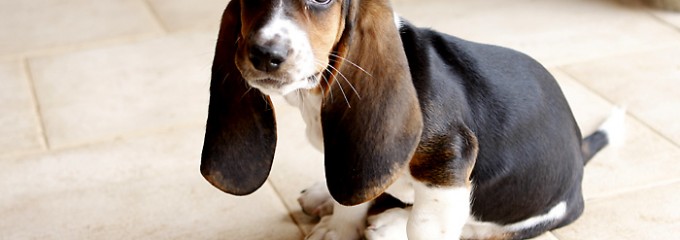Making Your Apartment Safe for Your Pet

In a lot of ways, getting a new pet is like adding another child to your family. True, he’ll never learn to talk, but he’s just as curious. Curiosity can lead to accidents. That’s why you should pet-proof your apartment just like you would childproof your apartment. In fact, some of the steps will be the same. If you plan on welcoming a new critter into your home soon, check out the list we’ve compiled of pet-proofing steps to take first:
- In the kitchen. Of course, the main issues here are any foods that could be harmful to your pet. Most pet owners know that they need to keep chocolate far out of paw’s reach, but did you know that avocados, coffee, garlic, and grapes are also toxic to cats and dogs? So are onions, macadamia nuts, and raisins. Make sure you stow these items somewhere behind closed doors—just putting them up on the counter might not work for particularly adventurous cats. Also lock up or put away sharp knives, any wrappers or twist ties that animals could potentially choke on, and whatever else you think could cause injuries or illness.
- In the bathroom. Since this is the place that most people keep their medications and cleaning products, it’s a real danger zone for pets. If possible, keep them out of the bathroom altogether—make sure the door stays closed whenever it’s not in use. If this isn’t a realistic goal, then at least put harmful products on high shelves that your cat or dog can’t access. You should also keep hairstyling tools with cords inside of a cabinet, as they could pose a potential strangulation risk. Keep the lid down on the toilet so that pooches don’t accidentally get a mouthful of whatever cleanser you use, and never let water sit in the tub, as your kitty could potentially fall in.
- In the living room. Cover up cords from the TV or desktop PC—if a curious pup starts chewing on one, he might receive a nasty shock. Also make sure your little ones keep their toys contained, as your dog may try to eat them for lunch. The same goes for any knickknacks that your pup can reach. If you keep them up on the mantel or a high shelf, make sure your cat knows how to deftly navigate them before leaving her unattended in the living room. Also never leave a door open that leads to the outside.
- In the bedroom. Again, don’t leave electrical cords out in the open. You should also keep your closet doors closed, as cats or dogs who get their paws on buttons will be in for a difficult day if they swallow one. That’s not to mention the fact that the animal might ruin your favorite blouse or pair of shoes. Keep any small items (like bobby pins and hair ties) tucked away neatly in a spot where your cat or dog can’t get to them.
Pet-Proofing Your Home: A Room-by-Room Guide [Houzz]
Pet-Proofing Your Home [American Humane Association]
Image: http://commons.wikimedia.org/wiki/File:Cara_de_quem_caiu_do_caminh%C3%A3o….jpg
Attribution: CC BY 2.0/ Flickr/Anderson Nascimento